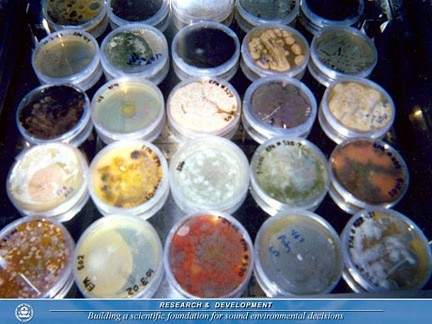Mold, a threat to your home –– and health
Melanie Siegel Rubin’s south Merrick home was, like hundreds of homes across the South Shore, flooded when Hurricane Sandy struck on Oct. 29. Saltwater inundated the front entrance and back laundry room. She did not realize, however, that water had soaked through her plywood subfloor when her crawl space flooded.
That allowed mold, a living organism, to spread across the plywood, which would all but destroy her home.
“We should have ripped out the whole first floor at the beginning,” said Siegel Rubin, “but we didn’t know we had to. The floor looked dry on the top.” Her contractors, she said, “thought they had dried everything.”
But moisture was trapped in a space between her subfloor and hardwood floor, which was covered by granite tile in areas and carpet in others. Mold, which grows rapidly in warm, humid conditions and can reproduce in total darkness, proliferated in that space –– and grew across the floor, up the walls and behind the kitchen cabinets.
“The more and more we looked, the worse it got,” Siegel Rubin said. “The whole kitchen had to be ripped out, my flooring, two feet up the walls throughout the whole floor, everything in the garage.” Even exterior siding had to be cut out to get at mold trapped in wall cavities.
According to the U.S. Centers for Disease Control and Prevention, flooding after storms like Sandy severely “increases the likelihood of mold contamination.” That became clear after hurricanes Katrina and Rita in August and September 2005. With homes across New Orleans flooded for weeks, more than 100,000 houses –– or 46 percent of the total in New Orleans and surrounding municipalities –– had mold contamination, according to the CDC.
Homeowners who breathe in high doses of mold are susceptible to many respiratory illnesses, including hypersensitivity pneumonitis, also known as farmer’s lung, which causes chronic inflammation of the lungs, shortness of breath and exhaustion, the CDC noted in a June 2006 report, “Mold Prevention Strategies and Possible Health Effects in the Aftermath of Hurricanes and Major Floods.”
A destructive fungus

 47.0°,
Mostly Cloudy
47.0°,
Mostly Cloudy 







